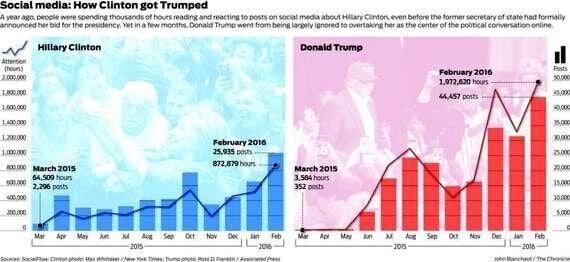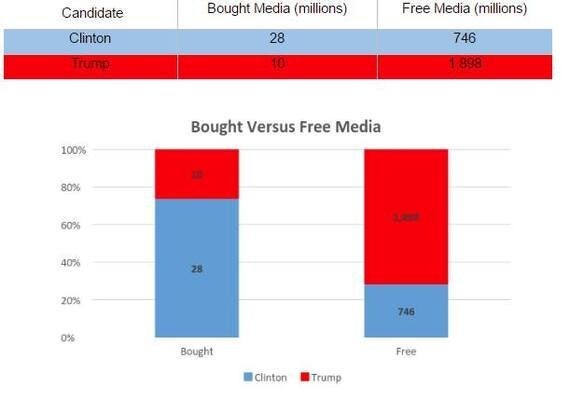Mark Hawtin and Amanda Lyons, GAM
For the first time in US election history the battleground was social media, with the new arena completely altering the way candidates amplify their reach and power.
Obama was the first President to embrace digital media in his 2008 election campaign. He understood the power of the internet to get people engaged on a scale like never before . Lessons were learnt and future candidates begun to understand the importance of this new medium, although Trump and Clinton ultimately took very different approaches.
When Donald Trump first put his hat into the ring to stand for President he was considered a joke, therefore it was important for him to build his following as quickly as possible. He already had a strong social media presence (4.3m Twitter followers in October 2015) due to his role in The Apprentice, his use of Twitter to regularly voice his opinions, and his arguments with other celebrities. Trump built on his existing persona of being argumentative and started posting simple, inflammatory statements to get people talking. He understood that plain speech and emotional messaging worked. His posts were retweeted by both those who agreed and disagreed with his statements, in the name of debate. This instantly increased his reach as network effects started to come into play.
Over 70% of the US population is on Facebook at least once a month (229m MAU), and 178m of them are on Facebook each day; this compares to 189m monthly average users (MAU) and 132m daily average users (DAU) in 2012. Engagement also increased in this period from 70% to 78%. Similarly, Twitter's user base also increased from 40m MAU in 2012 to 67m today. The ability to reach almost all of the US voting public at any time and have the ability to fully control the message and the discussion is incredibly powerful.
Social media is also incredibly important when you consider its reach in the 18-25 year old demographic. This cohort has been traditionally very hard to reach, and even harder to engage in politics. Platforms such as Instagram and Snapchat have brought that demographic into play, with both candidates on both platforms. Their families were also active online, with Donald Trump's four children boosting his campaign through their postings. While young voters typically lean to the left and naturally favour Hillary, the Clinton camp were reliant solely on Bill (70 yrs) and Chelsea (36 yrs).
By the time of the election Donald Trump had a far wider reach than Hillary Clinton on both Twitter (13.5m vs. 10.5m followers) and Facebook (13m vs. 8.6m followers). Donald's concise messaging and often controversial statements were perfectly suited for the 140 character medium and ensured high reach and frequency. Social media provided him with the means to talk directly to people. Although he was ridiculed by journalists and the political elite, they were in fact the ones out of touch while he was listening to what the public was saying. Conversely, Hillary's messaging was unclear and did not provoke debate or conversation.

Source: SocialFlow
The two camps also differed dramatically in terms of how much and where they spent their campaign dollars. The New York Times estimated in March 2016 that Trump had earned just shy of $2bn in free media coverage compared to $10m in bought media . This compares to $746m in free coverage for Clinton and $28m in bought media (this was before they were officially the party candidates). As of 19 October the Trump campaign had spent $68m on media buying and the Clinton campaign had spent $237m, however the breakdown of this spend differs considerably. Trump focused his spend on digital, whereas Clinton focused on staffing field offices around battleground states. Despite Trump spending considerably less, he was able to make his dollars go further by concentrating on digital where ads can be targeted, re-targeted and refined to ensure the highest ROI.

Source: Fast Web Media
Social media also played an important role in causing the surprise/shock felt by a Trump win. It is designed to make us feel more connected, but instead many people refine their Facebook and Twitter feeds to follow like-minded people. Karen North, professor of digital media at USC, believes that we "seek opinions that confirm our own." Consequently, the traditional press (who were on the whole against Trump) were confident of a Clinton win. This, combined with outdated polling techniques, helped to contribute to the surprise.
